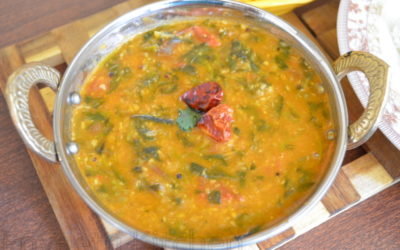The staple food of India is rice. Up until 1970, India was home to nearly 1,10,000 varieties of indigenous rice! Thanks, but no thanks to the Green Revolution, only 6,000 varieties now remain – a result of the green revolution’s emphasis on mono culture and hybrid cropping! Be that as it may, India is known for its sheer variety of rice dishes that are prepared and served, no matter what the occasion – sickness, health, family gathering, festivities, Hindu rituals, offering (naivedya or prasad), weddings, funerals, even as offerings to ancestors and departed souls.The variety of rice preparations are indeed many – as widely varied as the cultural diversity of this country – from coast to coast, from the mountains to the valleys, East to West, North to South.
Congee
In its humblest form, rice is made into a gruel or porridge called Congee (also called kanji, ganji,pez, ambil). Valued for the nutritional strength of the starch in this porridge where the rice isboiled to a soft consistency, the congee is the staple food in the poorest homes of India.Leftover rice soaked in water from a previous night and served as breakfast is much sought after in all parts of South India because of its high nutritional value. Its popularity is such that,there are restaurants that serve it as breakfast to office goers. Because of its high nutritionalvalue and easy digestibility, congee is prescribed as diet food for recuperating patients at home.Congee is also prepared using wheat grits (daliya), foxtail millet, pearl millet (ragi), brokenmaize, sago, etc.
Preparation
To prepare the dish, rice is boiled in a large quantity of water until it softens significantly. Congee can be made in a pot or in a rice cooker. Some rice cookers have a “congee”; setting, allowing it to be cooked overnight. The type of rice used can be either short (or broken) – or long-grain, depending on what is available and regional cultural influences.Congee is bland and therefore its flavor is enhanced with salt, papadam or such varieties of crispies, pickle, chutney, vegetables, pure ghee, etc. In some regions of South India, sweet variations of the congee using jaggery, coconut, unprocessed candy sugar, buttermilk, milk, etc. are also made.
Ingredients
The essential ingredients for congee are only two – soaked rice and, 3-4 times its quantity of water.
New Rice

- 1 Padi New Rice
- 3+1 Padis Clean Water
Method:
1. Clean the rice, soak 1 padi of rice in 1 padi of warm water for 15 minutes and drain the water.
2. Put 3 padis of clean water in a pot that can hold 5 padis of water.
3. Once the water starts to boil, add the rice and stir well. Cover the pot with a lid.
4. Few minutes later stir it again until the rice is 3/4th cooked and mix well again.
5. Cover the pot with wet cloth and drain the Kanji. Place on the warm stove, mix well for 5 minutes and keep aside.
Note: * How to know if the rice is 3/4th cooked
a.) the rice will be soft upon touching. b.)You can see white steam at the mouth of the pot.
Note: **New rice has a tendency to overcook. To avoid this, soak the rice for 15 minutes in warm water (when steam starts to arise) then add it into the boiling water. Alternatively, before mixing the rice in plain water, add ⅜ spoon of ghee to prevent it from overcooking.




0 Comments